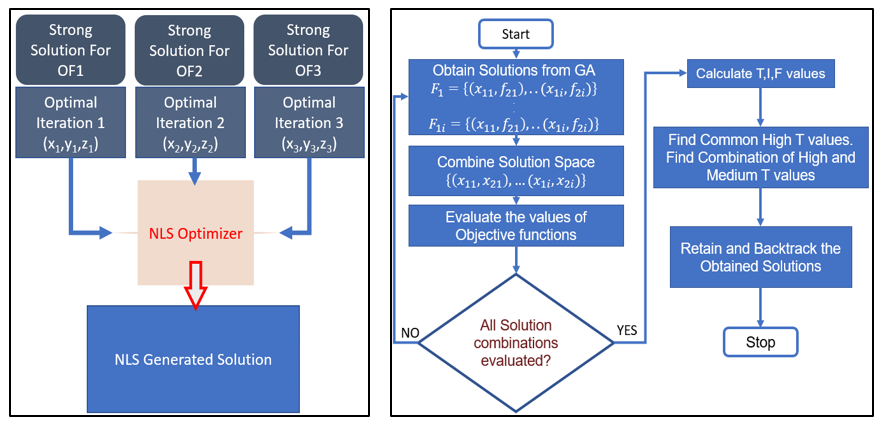A Weighted multi-objective evolutionary algorithm optimization
Main Article Content
Article Sidebar

Abstract
Weight Based Genetic Algorithms (WBGA) have a computational efficacy and non-cumbersome for multi-objective optimization. The solutions obtained in the converged region do not always produce maximum optimization for all the objective functions simultaneously. But, the combination of the solutions from different iteration may yield optimized values for all the objective functions to a satisfactory level. The paper attempts to find a method which keeps the simplicity and computational efficiency of WBGA intact, but at the same time counters the problem of inferior pareto-optimal solutions. This is done by finding such a combinational set of solutions which yields strong values for all the objectives. The paper proposes neutrosophic logic (NL) as a postprocessor to the outcome of the WBGA. The NL assigns a percentage of truth, false and indeterminant value to the obtained solutions. The proposed postprocessor operation has been demonstrated with hand calculations on a test problem, and a complex practical example. The results obtained as compared to WBGA show the emergence of a superior solution-set and reaches in close agreement with NSGA-II, while maintaining the computational efficiency.
How to Cite
Article Details
Weighted Genetic Algorithm, Neutrosophic Logic
https://doi.org/10.1016/j.ress.2005.11.018
2. K.Deb et al. IEEE Transactions on Evolutionary Computation, 6, 182(2002).
https://doi.org/10.1109/4235.996017
3. H. Eskandari, et al. Journal of Heuristics, 14, 203(2008).
https://doi.org/10.1007/s10732-007-9037-z
4. A.K. Sinha, A. Anand, Applied Soft Computing, 86,105921(2020)
https://doi.org/10.1016/j.asoc.2019.105921
5. A.K. Sinha, D.Y. Kim, D. Ceglarek, Optics and Lasers in Engineering, 51, 1143(2013).
https://doi.org/10.1016/j.optlaseng.2013.04.012
6. J.Wang and X. Zhang, Symmetry (MDPI publishers) 11, 1074(2019) https://doi.org/10.3390/sym11091074
7. F. Smarandache and L. Vlădăreanu, IEEE International Conference on Granular Computing, Kaohsiung, 607(2011)
https://doi.org/10.1109/GRC.2011.6122666